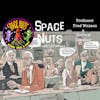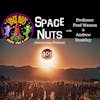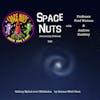Probing the Dark Unknowns: Seeking Clarity on Dark Matter and Energy | #385

In a serendipitous moment, Andrew Dunkley's passion for astronomy was sparked by a chance encounter with a telescope at a friend's house. Little did he know that a simple gaze through the lens would ignite a lifelong curiosity for the mysteries of the...
In a serendipitous moment, Andrew Dunkley's passion for astronomy was sparked by a chance encounter with a telescope at a friend's house. Little did he know that a simple gaze through the lens would ignite a lifelong curiosity for the mysteries of the universe. As he delved into books, documentaries, and conversations with fellow enthusiasts, his thirst for cosmic knowledge only grew stronger. What cosmic wonders await those who seek to understand the stars and galaxies?
In this episode, you will be able to:
· Explore the fascinating world of galaxies' rotation curves and their intriguing variations. · Discover the hidden secrets of spiral arms visibility through the lens of infrared observations. · Understand how gravity bends space and its profound implications on the universe.
· Uncover the crucial distinctions between dark matter and dark energy, unraveling cosmic mysteries.
"You can do anything in science fiction.' - Andrew Dunkley
Bending of Space due to Gravity
Gravitational influence on the bending of space is a central concept in Einstein's theory of relativity. It proposes that the force of gravity resulting from an object's mass distorts space around it. This remarkable insight about the interplay between gravity and spacetime allows us to understand extraordinary phenomena, such as the distortion of star positions during an eclipse. This theory immensely enriches our understanding of the universe and shapes our perception of space and time.
The resources mentioned in this episode are:
· Visit spacenutspodcast.com to send in your own audio or text questions for the show.
· Check out the AMA link on the website to submit your questions for the next episode. ·
Click on the tab on the right-hand side of the homepage to send in your audio questions. · Listen to the Space Nuts podcast on Apple Podcasts, Google Podcasts, Spotify, iHeartRadio, or your favorite podcast player. ·
Stream on demand at bitesz.com to catch up on previous episodes. ·
The key moments in this episode are:
00:00:00 - Thank you and break announcement
00:02:22 - Q&A Episode Introduction
00:08:01 - Understanding Gravity
00:11:14 - Theoretical Walk on a Neutron Star
00:16:46 - Clarification on Biochemical Processes
00:17:25 - RNA as the precursor to DNA and proteins
00:18:57 - Dark energy and dark matter web
00:22:17 - Universe's expansion and the role of dark energy
00:25:03 - White holes and dark matter
00:29:13 - Period of inflation and the speed of light
00:34:21 - The World Wide Web nickname
00:36:14 - Speed of light and space travel
00:37:22 - Counting stars in the Milky Way
00:43:16 - Planetary diversity and moon composition
00:47:22 - Tipler cylinder and time travel
00:51:37 - The spacecraft design and terraforming challenges
00:52:29 - Science fiction and John Birmingham's latest series
00:53:38 - The Super Dunk series and a request to the author
00:54:27 - Audience engagement and question submissions
00:55:23 - Conclusion and farewell
Variation of Rotation Curves
The variation of rotation curves is an intriguing aspect of galaxies that fascinates astronomers. It refers to the speed at which stars and other celestial objects move around the center of a galaxy, and how this speed impacts the overall shape and structure of the galaxy. This element of astrophysics provides critical insights into how galaxies evolve over time, contributing significantly to our understanding of the universe's dynamics.
Infrared Observations and Spiral Arms
Infrared observations are pivotal to astronomy, allowing us to perceive celestial bodies and phenomena that remain concealed in other wavelengths. One interesting feature that can be detected in this way is the dust in...
New to Space Nuts?
Here are some great episodes to start with.







































